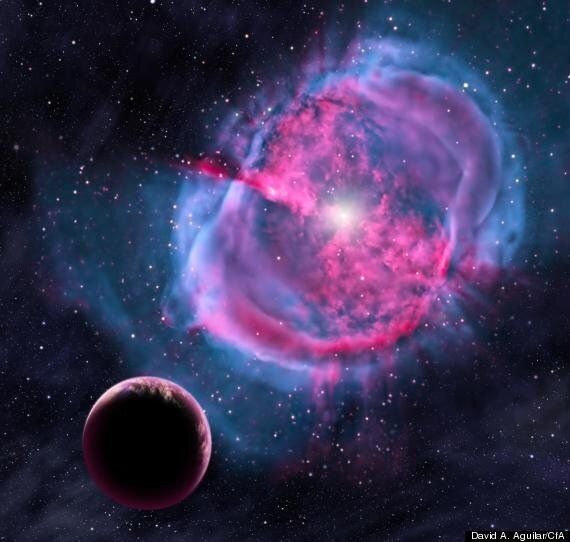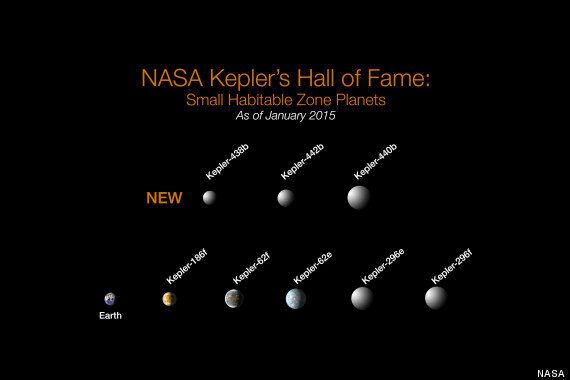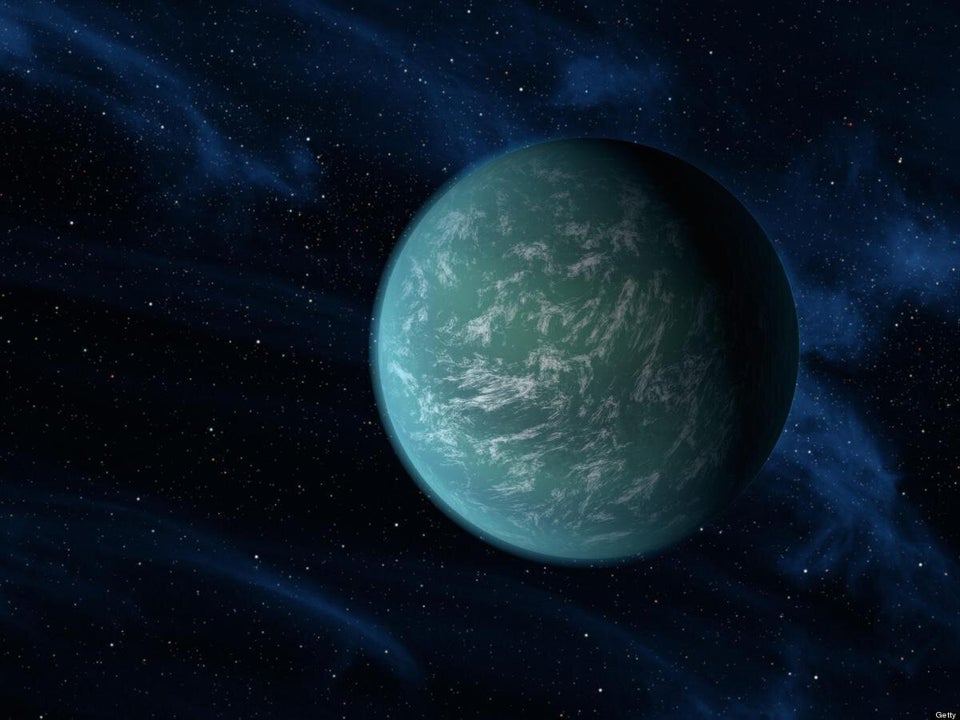Eight more planets have been discovered that could possess watery oceans and life, including two of the most Earth-like yet found. The new worlds double the number of small exoplanets believed to be circling their stars in the "habitable zone" - the narrow region in which temperatures are mild enough to allow liquid surface water and perhaps even life.
By "small" astronomers mean planets with less than twice the Earth's diameter. "Most of these planets have a good chance of being rocky, like Earth," said lead scientist Dr Guillermo Torres, from the Harvard-Smithsonian Centre for Astrophysics in Cambridge, US.

Artist's impression of an Earth-like planet orbiting a star near the end of its life surrounded by a shell of expanding gas
The two most Earth-like planets, known as Kepler-438b and Kepler-442b, both orbit red dwarf stars that are smaller and cooler than the Sun. With a diameter just 12% bigger than Earth, Kepler-438b has a 70% chance of being rocky, the scientists have calculated. Kepler-442b is about one-third larger than Earth, and the likelihood of it being rocky is around 60%.
To be in the habitable zone, also known as the "Goldilocks zone", a planet must be not too hot or too cold and receive roughly as much sunlight as Earth. Too much heat from its star, and any water would boil away as steam. Too little, and the water would freeze solid.
"For our calculations we chose to adopt the broadest possible limits that can plausibly lead to suitable conditions for life," Dr Torres added. Kepler-438b receives about 40% more light than the Earth giving it a 70% probability of having a habitable zone orbit. In comparison, baking hot Venus has twice as much.

Illustrations of the newfound exoplanets pictured next to Earth. Click on the image to enlarge
The other star gets about two-thirds as much light as Earth and is 97% likely to be in the habitable zone. Co-author Dr David Kipping, also from the Centre for Astrophysics, said: "We don't know for sure whether any of the planets in our sample are truly habitable. All we can say is that they're promising candidates."
Neither of the planets are our close neighbours. Kepler-438b is located 470 light-years from Earth while the more distant Kepler-442b is 1,100 light-years away. The team, whose findings were presented at the American Astronomical Society's annual meeting in Washington DC, studied planetary candidates first identified by the US space agency Nasa's Kepler space telescope.
All the planets were too small to confirm by measuring their masses. Instead, they were validated using a computer program that determined they were statistically likely to be planets. After the analysis, follow-up observations showed that four of the planets were in multiple star systems.
The eight discoveries are just the latest in a series of exoplanets found by the spacecraft. Since launching in 2009, Kepler has found 1,004 confirmed planets along with 4,175 planet candidates.
The research is also published in the Astrophysical Journal.
